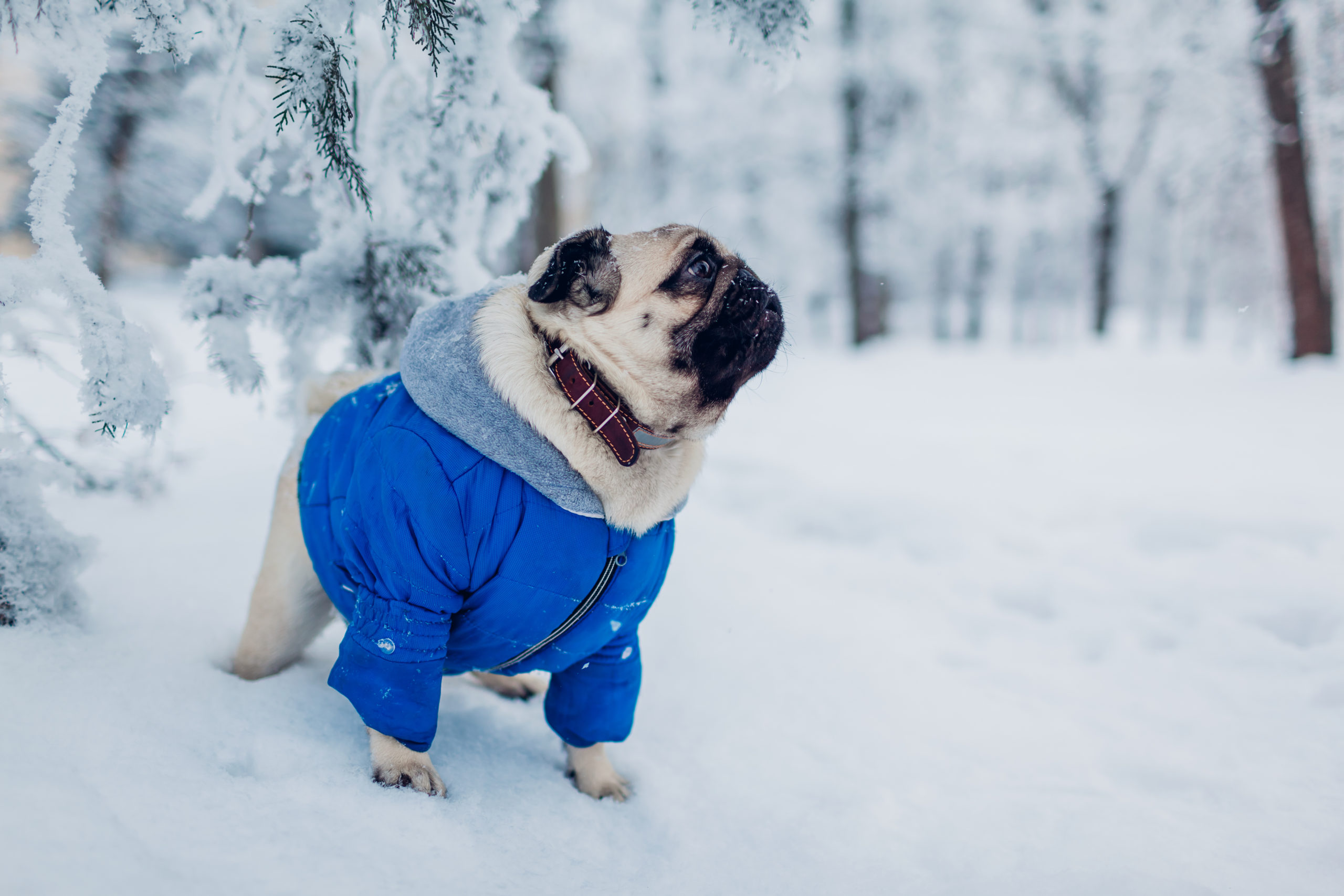
With winter and cold weather approaching, many pet parents wonder if their dogs need boots to protect their feet from the cold. So how cold does it need to be for dogs to need foot protection? This can be very breed-dependent, with huskies thriving in the cold and snow and greyhounds being unsuited for long stints outside in the snow. If dogs find the snow cold enough to be uncomfortable, they tend to pick up their paws, walk gingerly, sit down, and be generally unwilling to play. If they are shivering or seem unhappy, it might be time to head back inside and play indoors! But how to protect their feet?
Cold Paws
Winters can be cold, long, and dry—even with lots of snow and sleet outside; the air tends to dry out in the winter because cold air can’t hold as much moisture as warm air. Humans wrap their feet up in thick wool socks and waterproof boots up to protect them from the cold ground, but they often overlook their dog’s needs. While paw pads are more challenging and thicker than the bottom of our feet, that doesn’t mean they’re safe from frozen ground and winter debris.
There are some preventative measures you can take to keep your dog from getting cold feet this winter. Read on to learn how to keep your dog’s paws protected from the elements.
Salt & Other Ice-Melting Chemicals
To prevent humans from slipping on ice, various chemicals and products melt it during cold months. And while ice can be dangerous for dogs, especially if their nails are long or have mobility issues, the chemicals to melt the ice pose a risk. Dogs can irritate or burn their paws by walking on salt or ice-melt products, and if they lick, chew, bite, or gnaw at their paws, they could further irritate the skin or ingest harmful toxins chemicals.
If you use an ice-melt at your house, opt for something labeled “pet-safe”—beware, however, that pet-safe doesn’t mean it can be ingested or come into topical contact with your dog’s skin without any risk of irritation. The longer the topical exposure with the ice-melt or the more ingested, the more likely there is to be an issue. Even if you use pet-safe products, following the steps below is essential to keep your pup as safe, healthy, and happy as possible this winter.
Prevention
Maintaining proper humidity, generally considered 30-50%, in your home during the winter months promotes skin health for both you and your dog. A good humidifier will keep your living space in this range. Staying hydrated is also crucial for maintaining your dog’s skin health, including the skin of their paw pads, which becomes especially important in dry, cold climates. If your dog drinks plenty of water and if your house stays at an appropriate humidity level, you’ll be setting your dog’s paws up for success this winter.





